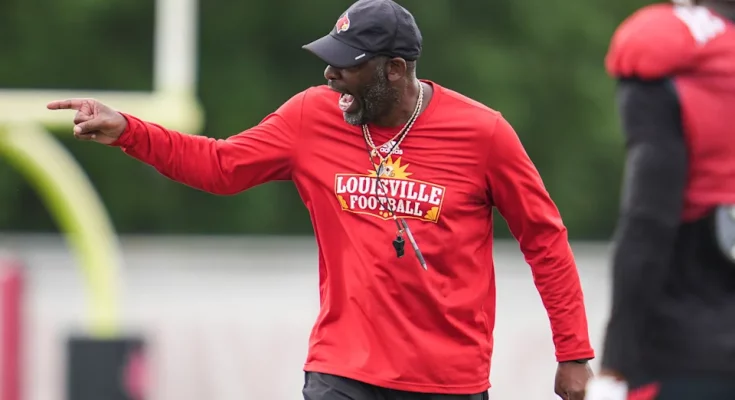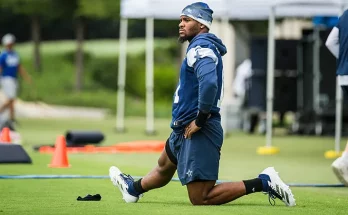The college basketball landscape is always in a state of flux, with teams evolving from one season to the next based on coaching adjustments, player development, and strategic shifts. This year, two of the most storied programs in the Southeastern Conference, the Louisville Cardinals and the Kentucky Wildcats, enter the season with the potential to significantly improve their defensive performance. Both programs have experienced defensive struggles in recent years, but several factors suggest that this year, fans could see a much tighter, more disciplined approach on that side of the court. Louisville and Kentucky have built rosters and systems that are conducive to better defensive efficiency, and understanding why requires examining coaching philosophies, player composition, and offseason developments.
Starting with the Louisville Cardinals, the program has historically prided itself on defensive intensity. Under the guidance of head coach Kenny Payne, who has emphasized a fast-paced, pressure-oriented style of play, the team is poised to return to its defensive roots. Louisville’s previous seasons have revealed defensive inconsistencies, largely stemming from a lack of continuity and experience in the backcourt. However, this year’s roster includes several players who have gained valuable in-game experience and have been specifically developed to handle high-pressure defensive assignments. Experience is crucial on defense because understanding rotations, help-side positioning, and communication comes with time on the court. The Cardinals’ returning guards and forwards have had a full offseason to internalize Payne’s defensive schemes, and their familiarity with each other’s tendencies will likely reduce the breakdowns that plagued the team in previous campaigns.
Moreover, Louisville has actively recruited players known for their defensive prowess, particularly on the perimeter. In modern college basketball, defending the three-point line and limiting open perimeter shots is essential for a team’s success. The Cardinals have a blend of athletic wings and versatile forwards who can switch across multiple positions, allowing for a more dynamic and adaptive defensive scheme. This versatility is critical because opponents increasingly rely on pick-and-roll actions and off-ball movement to create scoring opportunities. By employing guards who can pressure the ball and forwards who can hedge or rotate effectively, Louisville can disrupt passing lanes, force turnovers, and generate defensive rebounds. Improved rebounding is another key element, as it limits opponents’ second-chance points, a factor that contributed to their defensive struggles in past seasons.
The coaching staff has also emphasized defensive analytics and film study during the offseason. Teams that analyze opponent tendencies, shot selection, and ball movement patterns are better prepared to anticipate offensive actions and make quick, informed decisions on the court. Louisville’s coaching staff has invested time in using video sessions to teach players how to recognize sets, identify mismatches, and maintain proper spacing on defense. This analytical approach complements the natural athleticism of the roster, creating a team that is not only physically capable but also intellectually engaged in defending. In short, Louisville’s combination of experienced players, defensive-minded recruits, athletic versatility, and analytical preparation forms the foundation for a noticeable improvement in defensive performance this season.
Turning to the Kentucky Wildcats, the program has faced a similar challenge in recent years. Kentucky basketball is often associated with elite recruiting and high-powered offenses, but defensive consistency has sometimes lagged behind. This season, however, there are several reasons to believe that the Wildcats will elevate their defensive game. First, head coach John Calipari has continued to prioritize recruiting players who excel on both ends of the court. Kentucky’s roster features several elite athletes who have the physical tools to compete at a high level defensively. Length, speed, and agility are vital for disrupting passing lanes, contesting shots, and applying pressure on the ball handler. With a roster rich in athletic talent, the Wildcats have the raw materials necessary to execute an aggressive, high-energy defensive approach.
In addition to physical attributes, player development is central to Kentucky’s potential defensive improvement. Calipari’s program has a reputation for preparing freshmen for the demands of college basketball quickly, and this includes instilling defensive fundamentals. Players are now more accustomed to concepts like help defense, rotation timing, and closing out on shooters. This development is evident in Kentucky’s summer league and preseason scrimmages, where the team demonstrated a more cohesive approach to defending the paint and perimeter. The improved communication and anticipation skills among players reduce the likelihood of defensive breakdowns, which was a weakness for the Wildcats in prior seasons. Even minor improvements in defensive discipline can translate into substantial gains in efficiency, as preventing high-percentage shots and controlling transition opportunities directly affects the team’s ability to win games.
Another factor that contributes to Kentucky’s defensive upside is their commitment to defensive schemes tailored to the personnel. The Wildcats possess versatile players capable of switching seamlessly on pick-and-rolls, executing zone principles when necessary, and applying full-court pressure to force turnovers. By matching their defensive approach to the strengths of their roster, Kentucky maximizes the effectiveness of each player on the court. This tailored approach allows the team to be adaptive against different opponents, whether facing a slow, half-court offense or a fast-paced, three-point-heavy team. Additionally, the coaching staff has placed an emphasis on conditioning and stamina, understanding that sustained defensive intensity requires both mental and physical endurance. A team that can maintain pressure for extended stretches reduces scoring opportunities for opponents and forces mistakes that lead to transition points.
For both Louisville and Kentucky, the mental aspect of defense cannot be understated. Successful defense relies on awareness, anticipation, and resilience. Players must remain focused, react quickly to developing plays, and trust their teammates to fulfill rotations. Both programs have invested in cultivating a defensive mindset, emphasizing accountability and teamwork. The psychological commitment to defense often separates good teams from elite ones because it ensures that players maintain effort and concentration even in challenging game situations. Louisville’s high-pressure defensive style and Kentucky’s versatile defensive schemes both require players to embrace these mental aspects fully, and reports from early practices suggest that the teams are embracing the challenge.
Another critical point in favor of defensive improvement is the experience gained from last season. Both programs endured games where defensive lapses proved costly, providing valuable learning opportunities. Louisville learned the importance of discipline in rotation and closing out shooters, while Kentucky observed the need for communication and proper help-side positioning. Returning players have had time to internalize these lessons, making them less likely to repeat mistakes. In addition, the presence of veteran players who can mentor younger teammates reinforces defensive accountability. This mentorship is especially valuable in programs with a mix of experienced players and talented newcomers, as it ensures that defensive principles are consistently applied regardless of who is on the court.
Finally, the competitive environment of the Southeastern Conference incentivizes defensive improvement. The SEC is home to some of the nation’s most potent offenses, and teams that fail to prioritize defense often find themselves on the losing end. Both Louisville and Kentucky face strong competition week in and week out, which necessitates a defensive mindset. When teams recognize that scoring alone is insufficient to guarantee victories, they are more likely to commit to effort, discipline, and strategy on the defensive end. This competitive pressure serves as a catalyst for improvement, motivating players and coaches alike to refine techniques and implement effective schemes.



